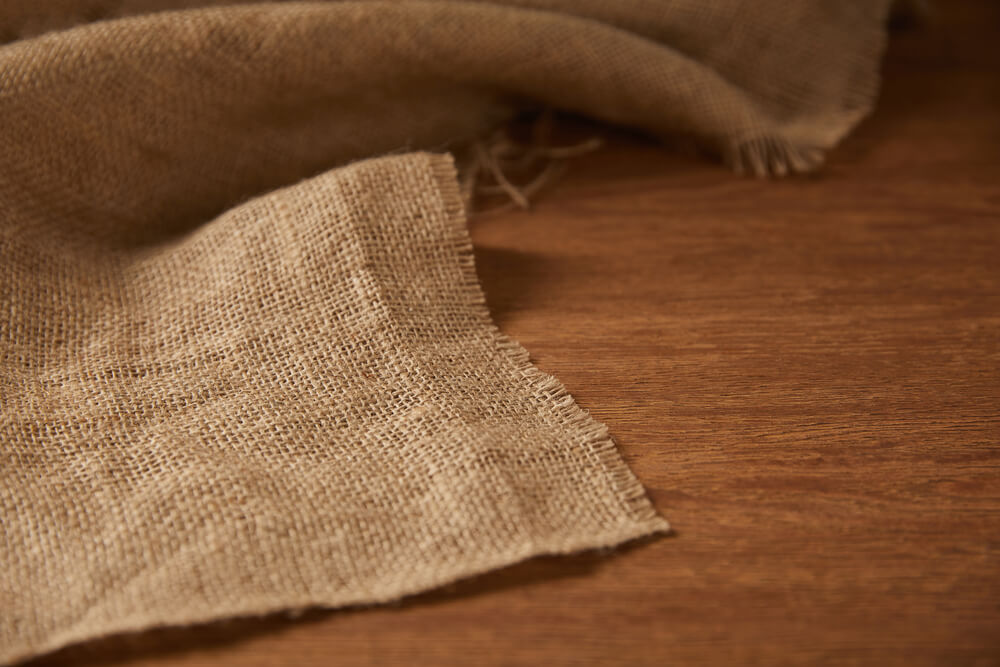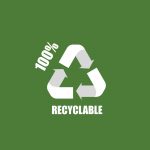When it comes to packaging, plastic materials are at the forefront of popular usage, but today eco-friendly materials like Hessian can make a difference.
Not only does hessian shine ecologically but economically too.
Hessian fabric is durable, sustainable, and breathable. It’s also way more versatile than plastic packaging. But is hessian biodegradable? How long does it take to decompose?
Yes, it’s biodegradable. In this article, I will exclusively take you through hessian, why it degrades, and all its properties.
Properties of Hessian Fabric
If you fully know the properties of hessian, you’ll find it easier to understand why hessian fabric biodegrades easily. Let’s find out the common ones;
- Durable, versatile, and lightweight
- Breathable and sustainable
- Tear and wear-resistant
- Not waterproof
- Environmentally friendly
These eco-friendly properties give hessian an advantage over other materials used in packaging.
What’s Hessian Made Of?
Sometimes called burlap in the United States, this fabric is made from sustainably grown plants – usually skin of the jute plant or sisal fibers.
The fabric can be paired with other vegetable fibers to create various products, including ropes, nets, and much more.
Historically, hessian has been produced as a dense wooden fabric. It’s now refined as jute (refined state of fabric) to make eco-friendly bags, rugs, and other similar products.
Is Hessian Fabric Biodegradable?
Yes, it is. Hessian is completely biodegradable, given that it’s sourced from cheap yet sustainable plants.
Unlike modern biodegradable materials, which require many years to degrade, hessian is an exception.
It only takes shorter periods to become a useful part of the soil.
Hessian fabric takes around 2 to 3 years to degrade as compared to plastic bags.
Many other similar materials used take decades to assimilate into the soil.
On top of that, it’s an incredibly strong packaging material that withstands daily wear and tear.
The fabric is widely used in the sartorial and fashion industry as an eco-alternative to denim.
How Long Does Hessian Take to Decompose?
We know that the decomposition of any material doesn’t happen overnight. A real hessian will take 2 to 3 years to break down completely.
If you want to speed up the decomposition process, make a hole in your compost pile and plant it. Hessian will decompose within the next 12 months or so. Try it out next time you’re out in the garden.
Is Hessian Environmentally Friendly?
Eco-friendly is one of the many properties associated with hessian.
As earlier mentioned, it’s derived from cheap, sustainable organic plants.
The fact that it’s biodegradable means it doesn’t have negative impacts on the environment.
Hessian also absorbs CO2 from the atmosphere but releases oxygen faster.
And you can throw it in your garden to enhance soil fertility.
It’s for that reason that Hessian is used in making tote bags in Australia.
Is Hessian Toxic?
Hessian, a densely woven fabric, is toxic-free. It’s harvested from natural plants that require no pesticides, fertilizers, or any other GMO to grow.
But if washed in detergents during the manufacturing process, it can retain traces of harmful chemicals such as water softeners, surfactants, and oxidants.
What Are the Benefits Of Using Hessian Fabric?
The material has gained popularity over the years because of many benefits it comes with:
- It provides a perfect combination of stylishness and durability. You don’t have to dispose of hessian material, instead re-purpose it for other household uses.
- Strong and breathable. Even if it wears out with age, hessian becomes more breathable without falling short on its strength.
- Versatile. Hessian is a strong packaging material (bag) used for goods that need some degree of breathability, strong containers, and cushioning vegetables and fruits during transportation.
- A good alternative to plastic materials since it degrades quickly.
- Less reliable to wear and tear.
What are the Uses of Hessian?
- Gardening industry. Hessian bags are very common in the gardening industry. It does help in gardening industries in one way or the other. The biodegradable material is added to a compost heap to enrich your soil organically. They’re also used to carry sand, leaves, soil, manure, or anything related to the garden.
- Farming industry. Small hessian sacks are ideal for carrying farm produce such as fruits and vegetables, potatoes, onions, and carrots.
- Fashion industry. The material is a cheaper, sustainable alternative to denim.
- Personal use. They’re great for DIY projects. Use the fabric as chair covers to a unique look and ambiance to your furniture.
Conclusion
If you want to go green, then opt for hessian fabric packaging rather than plastic packaging. In fact, you can get everything you need, from eco-friendly sandbags to planter bags.


